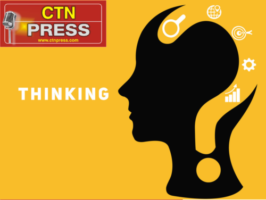MCQ-COST AND COSTING/ELEMENTS OF COST – FIXED EXPENSES/ VARIABLE EXPENSES/ BREAK-EVEN POINT
What is the primary purpose of costing in an organization?
A) To determine the selling price of products
B) To reduce costs
C) To maximize profits
D) All of the above
Answer: D) All of the above
Which of the following is not an element of cost?
A) Materials
B) Labor
C) Overheads
D) Profit
Answer: D) Profit
Fixed expenses are costs that:
A) Change with the level of production
B) Remain constant regardless of production levels
C) Are directly tied to the number of units produced
D) None of the above
Answer: B) Remain constant regardless of production levels
Which of the following is an example of a fixed expense?
A) Raw material cost
B) Utility bills
C) Salaries of permanent staff
D) Direct labor cost
Answer: C) Salaries of permanent staff
Variable expenses are costs that:
A) Remain the same regardless of production levels
B) Change in direct proportion to the level of production
C) Are incurred only when production stops
D) None of the above
Answer: B) Change in direct proportion to the level of production
Which of the following is an example of a variable expense?
A) Rent
B) Depreciation
C) Direct materials cost
D) Insurance
Answer: C) Direct materials cost
The break-even point is the level of production at which:
A) Total revenue equals total costs
B) Total revenue exceeds total costs
C) Total costs exceed total revenue
D) Variable costs are covered
Answer: A) Total revenue equals total costs
At the break-even point, the contribution margin is equal to:
A) Fixed expenses
B) Variable expenses
C) Total expenses
D) Total revenue
Answer: A) Fixed expenses
Which of the following formulas is used to calculate the break-even point in units?
A) Fixed Costs / (Selling Price per Unit – Variable Cost per Unit)
B) Fixed Costs / Total Revenue
C) (Fixed Costs + Variable Costs) / Selling Price per Unit
D) Fixed Costs / Variable Cost per Unit
Answer: A) Fixed Costs / (Selling Price per Unit – Variable Cost per Unit)
If the fixed costs are Rs.100,000, the variable cost per unit is Rs.50, and the selling price per unit is Rs.150, what is the break-even point in units?
A) 1,000 units
B) 500 units
C) 2,000 units
D) 667 units
Answer: B) 1,000 units
Costing involves which of the following activities?
A) Cost ascertainment
B) Cost control
C) Cost reduction
D) All of the above
Answer: D) All of the above
Which costing method assigns costs to individual jobs or batches?
A) Process costing
B) Job costing
C) Activity-based costing
D) Standard costing
Answer: B) Job costing
Which of the following is a direct cost?
A) Factory rent
B) Indirect labor
C) Direct materials
D) Administrative expenses
Answer: C) Direct materials
Which type of costing system is most suitable for a manufacturing company producing a homogeneous product?
A) Job costing
B) Process costing
C) Batch costing
D) Contract costing
Answer: B) Process costing
Which cost is associated with producing one additional unit of a product?
A) Average cost
B) Marginal cost
C) Total cost
D) Fixed cost
Answer: B) Marginal cost
In cost accounting, which term describes the allocation of indirect costs to cost objects?
A) Cost tracing
B) Cost pooling
C) Cost allocation
D) Cost accumulation
Answer: C) Cost allocation
Which of the following is not a feature of a good costing system?
A) Accuracy
B) Simplicity
C) Inflexibility
D) Consistency
Answer: C) Inflexibility
Which costing method uses predetermined overhead rates?
A) Job costing
B) Process costing
C) Absorption costing
D) Variable costing
Answer: C) Absorption costing
Which of the following is a step in the cost control process?
A) Setting standards
B) Measuring actual performance
C) Comparing actual with standard
D) All of the above
Answer: D) All of the above
Which costing technique focuses on managing costs by controlling the activities that drive costs?
A) Activity-based costing
B) Marginal costing
C) Standard costing
D) Absorption costing
Answer: A) Activity-based costing
Which of the following costs does not change with the level of production?
A) Direct materials
B) Direct labor
C) Factory rent
D) Sales commissions
Answer: C) Factory rent
Which expense is an example of a fixed cost?
A) Wages of temporary workers
B) Raw material costs
C) Property taxes
D) Direct labor costs
Answer: C) Property taxes
In a company’s cost structure, fixed costs:
A) Increase with increasing production
B) Decrease with decreasing production
C) Remain constant irrespective of production levels
D) Vary inversely with production levels
Answer: C) Remain constant irrespective of production levels
Which of the following would be classified as a fixed cost for a manufacturing plant?
A) Electricity for machinery
B) Factory manager’s salary
C) Direct materials
D) Production supplies
Answer: B) Factory manager’s salary
The depreciation of machinery in a manufacturing plant is an example of:
A) Variable cost
B) Fixed cost
C) Mixed cost
D) Semi-variable cost
Answer: B) Fixed cost
A cost that remains constant for a range of production levels and then jumps to a new level when production exceeds that range is known as a:
A) Fixed cost
B) Variable cost
C) Step cost
D) Mixed cost
Answer: C) Step cost
Fixed costs per unit will:
A) Increase as production decreases
B) Decrease as production increases
C) Remain constant as production changes
D) Both A and B
Answer: D) Both A and B
Which of the following is considered a committed fixed cost?
A) Advertising expenses
B) Research and development expenses
C) Lease payments on factory buildings
D) Utility costs
Answer: C) Lease payments on factory buildings
Which of the following costs is not likely to be fixed?
A) Depreciation of office equipment
B) Factory supervisor’s salary
C) Commission paid to sales staff
D) Insurance premiums
Answer: C) Commission paid to sales staff
Which of the following statements about fixed costs is true?
A) Fixed costs remain unchanged with changes in production volume.
B) Fixed costs are directly proportional to production volume.
C) Fixed costs decrease as production volume increases.
D) Fixed costs vary inversely with production volume.
Answer: A) Fixed costs remain unchanged with changes in production volume.
Which expense is an example of a variable cost?
A) Rent
B) Direct materials
C) Salaries of administrative staff
D) Depreciation
Answer: B) Direct materials
Variable costs per unit:
A) Increase as production decreases
B) Decrease as production increases
C) Remain constant as production changes
D) Fluctuate unpredictably with production changes
Answer: C) Remain constant as production changes
Which of the following is not an example of a variable cost?
A) Raw material costs
B) Direct labor costs
C) Sales commissions
D) Factory rent
Answer: D) Factory rent
As the level of production increases, the total variable cost:
A) Remains constant
B) Decreases
C) Increases
D) Varies inversely
Answer: C) Increases
Which cost changes in direct proportion to the level of activity?
A) Fixed cost
B) Variable cost
C) Mixed cost
D) Step cost
Answer: B) Variable cost
If a company’s production level doubles, its total variable costs will:
A) Remain the same
B) Double
C) Decrease
D) Increase but not necessarily double
Answer: B) Double
Which of the following is a characteristic of variable costs?
A) They remain fixed per unit.
B) They remain fixed in total.
C) They vary inversely with production volume.
D) They are constant irrespective of production levels.
Answer: A) They remain fixed per unit.
Which of the following would be classified as a variable cost for a bakery?
A) Rent of the bakery premises
B) Salary of the head baker
C) Flour used in baking
D) Depreciation of baking equipment
Answer: C) Flour used in baking
Which of the following is true for variable costs?
A) They decrease with an increase in production volume.
B) They increase with an increase in production volume.
C) They are constant per unit but vary in total.
D) Both B and C
Answer: D) Both B and C
Which of the following expenses is typically not considered a variable cost in a manufacturing setup?
A) Direct materials
B) Direct labor
C) Factory utilities
D) Plant manager’s salary
Answer: D) Plant manager’s salary
The break-even point is where:
A) Total revenue equals total variable costs
B) Total revenue equals total fixed costs
C) Total revenue equals total costs
D) Total variable costs equal total fixed costs
Answer: C) Total revenue equals total costs
At the break-even point, the profit is:
A) Positive
B) Negative
C) Zero
D) Equal to total fixed costs
Answer: C) Zero
The formula to calculate the break-even point in units is:
A) Fixed Costs / (Selling Price per Unit – Variable Cost per Unit)
B) (Fixed Costs + Variable Costs) / Selling Price per Unit
C) Fixed Costs / Variable Cost per Unit
D) (Fixed Costs + Profit) / (Selling Price per Unit – Variable Cost per Unit)
Answer: A) Fixed Costs / (Selling Price per Unit – Variable Cost per Unit)
If the fixed costs are Rs.120,000, the variable cost per unit is Rs.40, and the selling price per unit is Rs.80, the break-even point in units is:
A) 3,000 units
B) 1,500 units
C) 2,000 units
D) 4,000 units
Answer: A) 3,000 units
Which of the following actions will lower the break-even point, assuming all other factors remain constant?
A) Increasing fixed costs
B) Increasing variable costs per unit
C) Increasing the selling price per unit
D) Decreasing the selling price per unit
Answer: C) Increasing the selling price per unit
If the selling price per unit is increased, the break-even point will:
A) Increase
B) Decrease
C) Remain unchanged
D) Fluctuate
Answer: B) Decrease
Which of the following represents the contribution margin?
A) Selling price per unit – Fixed cost per unit
B) Selling price per unit – Variable cost per unit
C) Variable cost per unit – Fixed cost per unit
D) Total revenue – Total fixed costs
Answer: B) Selling price per unit – Variable cost per unit
The break-even point can also be calculated in terms of sales revenue using the formula:
A) Fixed Costs / (1 – (Variable Costs / Sales))
B) Fixed Costs / (Sales – Variable Costs)
C) Fixed Costs / (Selling Price – Variable Cost)
D) Fixed Costs / (1 – Contribution Margin Ratio)
Answer: D) Fixed Costs / (1 – Contribution Margin Ratio)
If the total fixed costs are Rs.200,000, the contribution margin ratio is 40%, the break-even point in sales revenue is:
A) Rs.500,000
B) Rs.800,000
C) Rs.400,000
D) Rs.1,000,000
Answer: A) Rs.500,000
Which of the following changes would not affect the break-even point?
A) Change in variable cost per unit
B) Change in fixed costs
C) Change in selling price per unit
D) Change in production method
Answer: D) Change in production method


